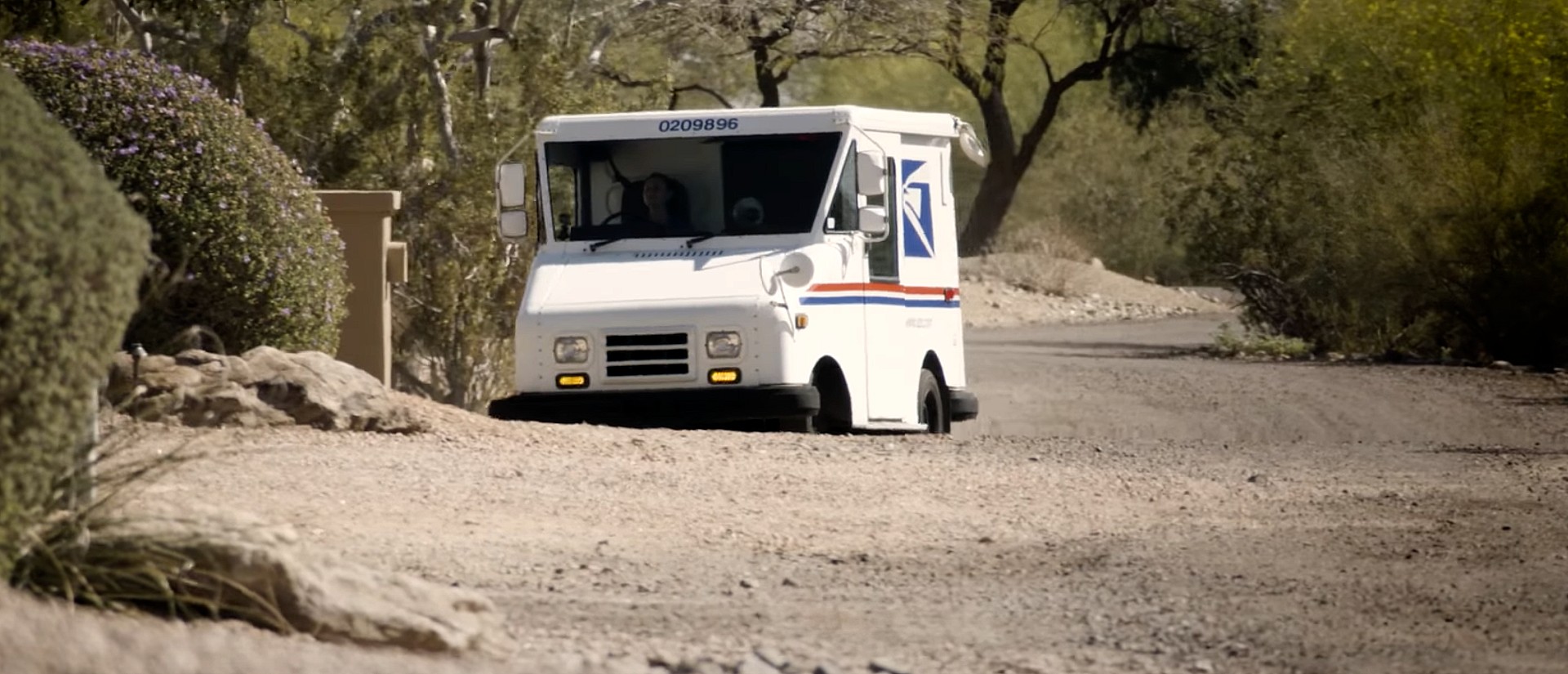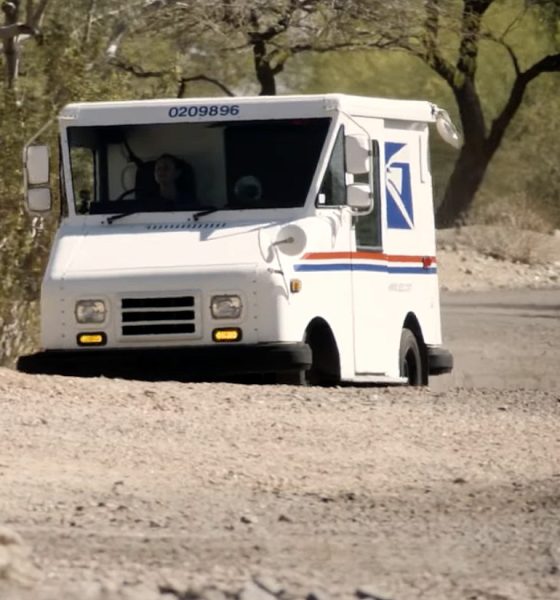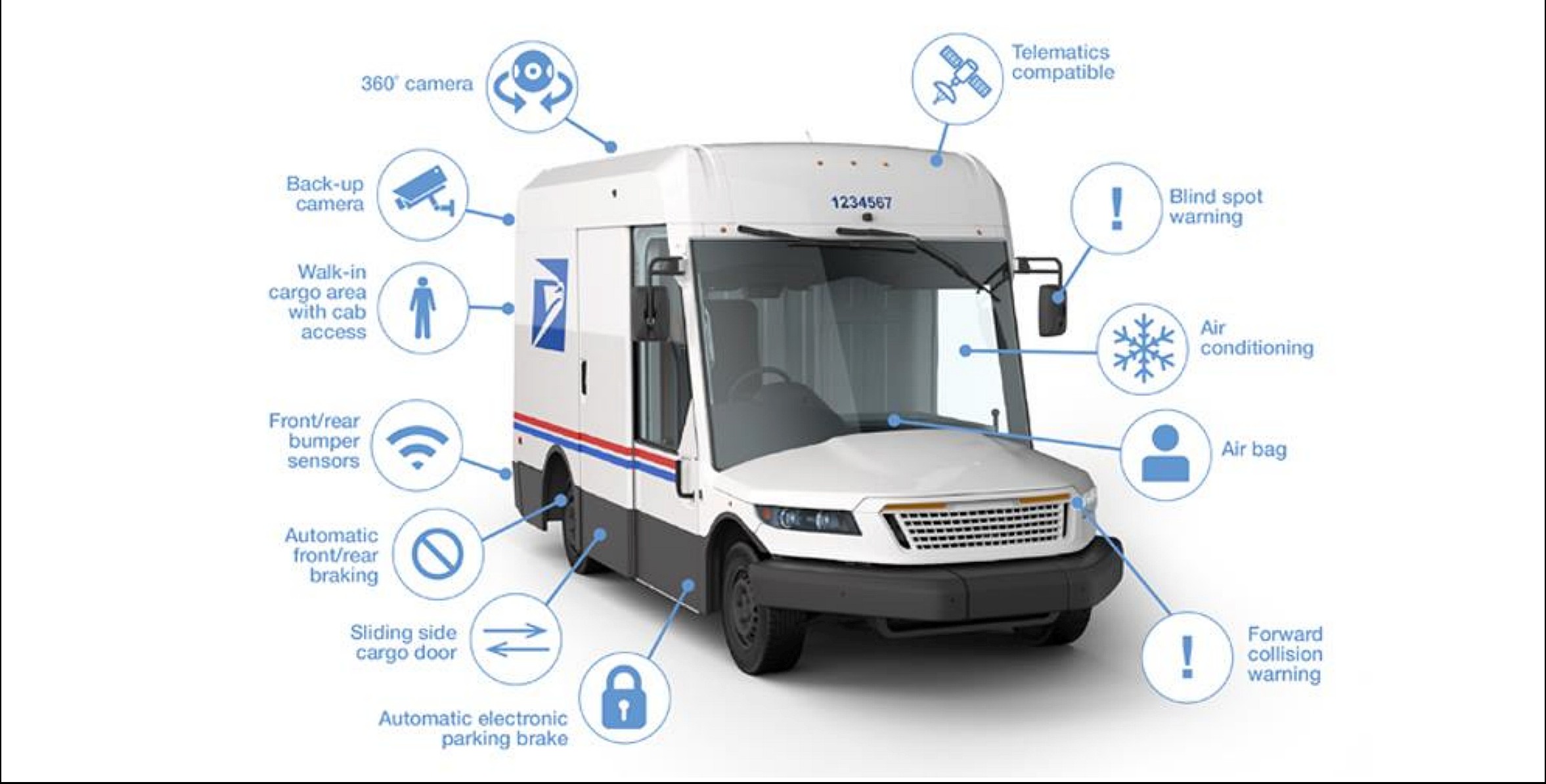

News
USPS says full-EV fleet not possible by 2033, requires $2.3B in additional investments
The United States Postal Service said in its December 2021 Environmental Impact Statement report that committing to a fully-electric fleet of 75,000 mail delivery vehicles would require an additional $2.3 billion investment. Additionally, the USPS may not be willing to commit to more than ten percent of its new fleet to electric powertrains as the government agency says it “is not achievable.”
The report was published on January 7th and details potential alternatives to its plan to purchase between 50,000 and 165,000 new vehicles that will “replace existing delivery vehicles nationwide that have reached the end of their service life.” In February 2021, the USPS announced a contract award to Oshkosh Defense, LLC for the production of the “Next-Generation Delivery Vehicles,” or NGDVs. The NGDVs will consist of at least 10 of having battery-electric powertrains. The remainder would have internal combustion engines.
The USPS is considering alternatives for comparison, which include 100 percent of the new vehicles being “commercial-off-the-shelf” (COTS) ICE vehicles, or 100 percent COTS electric cars. These are referred to in the report as Alternative 1.1 and 1.2, respectfully.
The current plan is for the USPS to begin replacing between 50,000 to 165,000 new vehicles. Ten percent will be EVs, at the minimum. The plan will take ten years to complete and will begin in 2023, as the first NGDV will make deliveries sometime in 2023. “The actual timeline and quantities of NGDV purchased and delivery vehicle types replaced would be contingent upon the Postal Service’s operational needs, including individual carrier route needs, and financial position,” the report says.
Credit: USPS
However, it appears unlikely that the USPS will commit to increasing the share of EVs in its fleet due to affordability reasons. In its report, it states that, while it understands BEVs are better for the environment, funding would not allow the USPS to make any significant changes to the current plan. The USPS states that its preferred alternative is actually the Proposed Action, which is to purchase and deploy up to 90 percent ICE NGDVs with 10 percent BEV NGDVs. “This Preferred Alternative is also the most achievable given the Postal Service’s financial condition, as the ICE NGDV is significantly less expensive than the BEV NGDV and does not have the same route length and other operational constraints as the BEVs. Finally, the 90 percent ICE NGDV Preferred Alternative would result in less fuel consumption and reduced direct and indirect greenhouse gas emissions as compared to the existing delivery vehicles being replaced,” the report adds.
Realizing that a full fleet of BEVs is better for the environment, as it would reduce “about 200 percent fewer direct and indirect greenhouse gas emissions than the 90 percent ICE NGDV” plan, the financial situation does not allow for it. The USPS says that “committing to purchase more than 10 percent BEV NGDV as part of the Preferred Alternative is not achievable, absent additional funding, as the 100 percent BEV NGDV Preferred Alternative is $2.3 billion more expensive than the 90 percent ICE NGDV Preferred Alternative for an order of 75,000 vehicles.” If the USPS wanted to transition all 165,000 vehicles to BEV powertrains, it would cost an additional $1 billion.
The USPS does have a third alternative: No action. The Postal Service will likely not commit to this option, but it does state that, “Utility service and infrastructure in place at Postal Service facilities currently are meeting service demands.”
The full report is available below.
Usps+Ngdv+Feis Dec+2021 by Joey Klender on Scribd
I’d love to hear from you! If you have any comments, concerns, or questions, please email me at joey@teslarati.com. You can also reach me on Twitter @KlenderJoey, or if you have news tips, you can email us at tips@teslarati.com.

News
Tesla FSD fleet is nearing 7 billion total miles, including 2.5 billion city miles
As can be seen on Tesla’s official FSD webpage, vehicles equipped with the system have now navigated over 6.99 billion miles.

Tesla’s Full Self-Driving (Supervised) fleet is closing in on almost 7 billion total miles driven, as per data posted by the company on its official FSD webpage.
These figures hint at the massive scale of data fueling Tesla’s rapid FSD improvements, which have been quite notable as of late.
FSD mileage milestones
As can be seen on Tesla’s official FSD webpage, vehicles equipped with the system have now navigated over 6.99 billion miles. Tesla owner and avid FSD tester Whole Mars Catalog also shared a screenshot indicating that from the nearly 7 billion miles traveled by the FSD fleet, more than 2.5 billion miles were driven inside cities.
City miles are particularly valuable for complex urban scenarios like unprotected turns, pedestrian interactions, and traffic lights. This is also the difference-maker for FSD, as only complex solutions, such as Waymo’s self-driving taxis, operate similarly on inner-city streets. And even then, incidents such as the San Francisco blackouts have proven challenging for sensor-rich vehicles like Waymos.
Tesla’s data edge
Tesla has a number of advantages in the autonomous vehicle sector, one of which is the size of its fleet and the number of vehicles training FSD on real-world roads. Tesla’s nearly 7 billion FSD miles then allow the company to roll out updates that make its vehicles behave like they are being driven by experienced drivers, even if they are operating on their own.
So notable are Tesla’s improvements to FSD that NVIDIA Director of Robotics Jim Fan, after experiencing FSD v14, noted that the system is the first AI that passes what he described as a “Physical Turing Test.”
“Despite knowing exactly how robot learning works, I still find it magical watching the steering wheel turn by itself. First it feels surreal, next it becomes routine. Then, like the smartphone, taking it away actively hurts. This is how humanity gets rewired and glued to god-like technologies,” Fan wrote in a post on X.
News
Tesla starts showing how FSD will change lives in Europe
Local officials tested the system on narrow country roads and were impressed by FSD’s smooth, human-like driving, with some calling the service a game-changer for everyday life in areas that are far from urban centers.

Tesla has launched Europe’s first public shuttle service using Full Self-Driving (Supervised) in the rural Eifelkreis Bitburg-Prüm region of Germany, demonstrating how the technology can restore independence and mobility for people who struggle with limited transport options.
Local officials tested the system on narrow country roads and were impressed by FSD’s smooth, human-like driving, with some calling the service a game-changer for everyday life in areas that are far from urban centers.
Officials see real impact on rural residents
Arzfeld Mayor Johannes Kuhl and District Administrator Andreas Kruppert personally tested the Tesla shuttle service. This allowed them to see just how well FSD navigated winding lanes and rural roads confidently. Kruppert said, “Autonomous driving sounds like science fiction to many, but we simply see here that it works totally well in rural regions too.” Kuhl, for his part, also noted that FSD “feels like a very experienced driver.”
The pilot complements the area’s “Citizen Bus” program, which provides on-demand rides for elderly residents who can no longer drive themselves. Tesla Europe shared a video of a demonstration of the service, highlighting how FSD gives people their freedom back, even in places where public transport is not as prevalent.
What the Ministry for Economic Affairs and Transport says
Rhineland-Palatinate’s Minister Daniela Schmitt supported the project, praising the collaboration that made this “first of its kind in Europe” possible. As per the ministry, the rural rollout for the service shows FSD’s potential beyond major cities, and it delivers tangible benefits like grocery runs, doctor visits, and social connections for isolated residents.
“Reliable and flexible mobility is especially vital in rural areas. With the launch of a shuttle service using self-driving vehicles (FSD supervised) by Tesla in the Eifelkreis Bitburg-Prüm, an innovative pilot project is now getting underway that complements local community bus services. It is the first project of its kind in Europe.
“The result is a real gain for rural mobility: greater accessibility, more flexibility and tangible benefits for everyday life. A strong signal for innovation, cooperation and future-oriented mobility beyond urban centers,” the ministry wrote in a LinkedIn post.
News
Tesla China quietly posts Robotaxi-related job listing
Tesla China is currently seeking a Low Voltage Electrical Engineer to work on circuit board design for the company’s autonomous vehicles.

Tesla has posted a new job listing in Shanghai explicitly tied to its Robotaxi program, fueling speculation that the company is preparing to launch its dedicated autonomous ride-hailing service in China.
As noted in the listing, Tesla China is currently seeking a Low Voltage Electrical Engineer to work on circuit board design for the company’s autonomous vehicles.
Robotaxi-specific role
The listing, which was shared on social media platform X by industry watcher @tslaming, suggested that Tesla China is looking to fill the role urgently. The job listing itself specifically mentions that the person hired for the role will be working on the Low Voltage Hardware team, which would design the circuit boards that would serve as the nervous system of the Robotaxi.
Key tasks for the role, as indicated in the job listing, include collaboration with PCB layout, firmware, mechanical, program management, and validation teams, among other responsibilities. The role is based in Shanghai.
China Robotaxi launch
China represents a massive potential market for robotaxis, with its dense urban centers and supportive policies in select cities. Tesla has limited permission to roll out FSD in the country, though despite this, its vehicles have been hailed as among the best in the market when it comes to autonomous features. So far, at least, it appears that China supports Tesla’s FSD and Robotaxi rollout.
This was hinted at in November, when Tesla brought the Cybercab to the 8th China International Import Expo (CIIE) in Shanghai, marking the first time that the autonomous two-seater was brought to the Asia-Pacific region. The vehicle, despite not having a release date in China, received a significant amount of interest among the event’s attendees.








